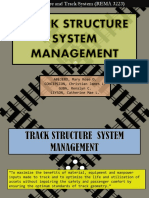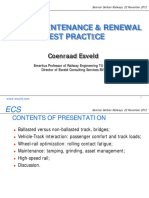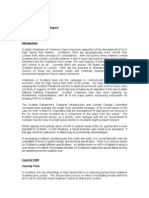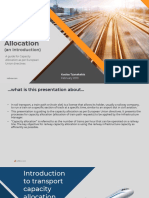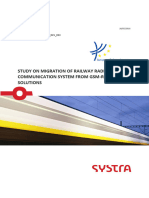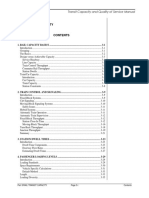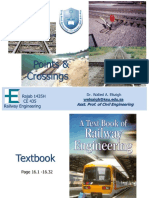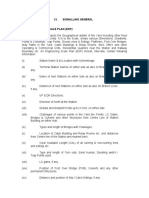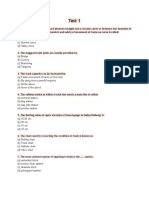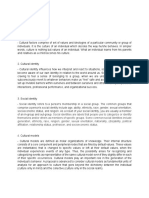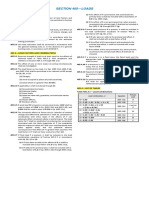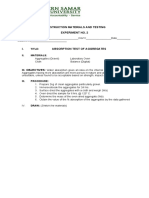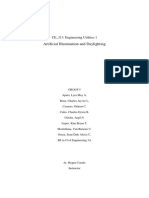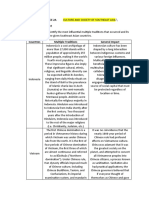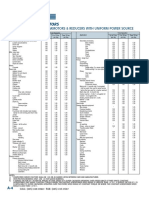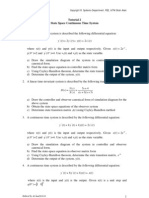0% found this document useful (0 votes)
147 views5 pagesIntro Railway Design
The document provides an introduction to railway design components. It discusses the definition of railways and their history. The main components of a railway track are then described in detail, including steel rail, railway sleepers, fish plates, fastening systems, switches, and bridges. Bridge components like bridge decks are explained. Structural design considerations for railway bridges cover loading and geometric design parameters.
Uploaded by
Narte, Angelo C.Copyright
© © All Rights Reserved
We take content rights seriously. If you suspect this is your content, claim it here.
Available Formats
Download as DOCX, PDF, TXT or read online on Scribd
0% found this document useful (0 votes)
147 views5 pagesIntro Railway Design
The document provides an introduction to railway design components. It discusses the definition of railways and their history. The main components of a railway track are then described in detail, including steel rail, railway sleepers, fish plates, fastening systems, switches, and bridges. Bridge components like bridge decks are explained. Structural design considerations for railway bridges cover loading and geometric design parameters.
Uploaded by
Narte, Angelo C.Copyright
© © All Rights Reserved
We take content rights seriously. If you suspect this is your content, claim it here.
Available Formats
Download as DOCX, PDF, TXT or read online on Scribd
/ 5










